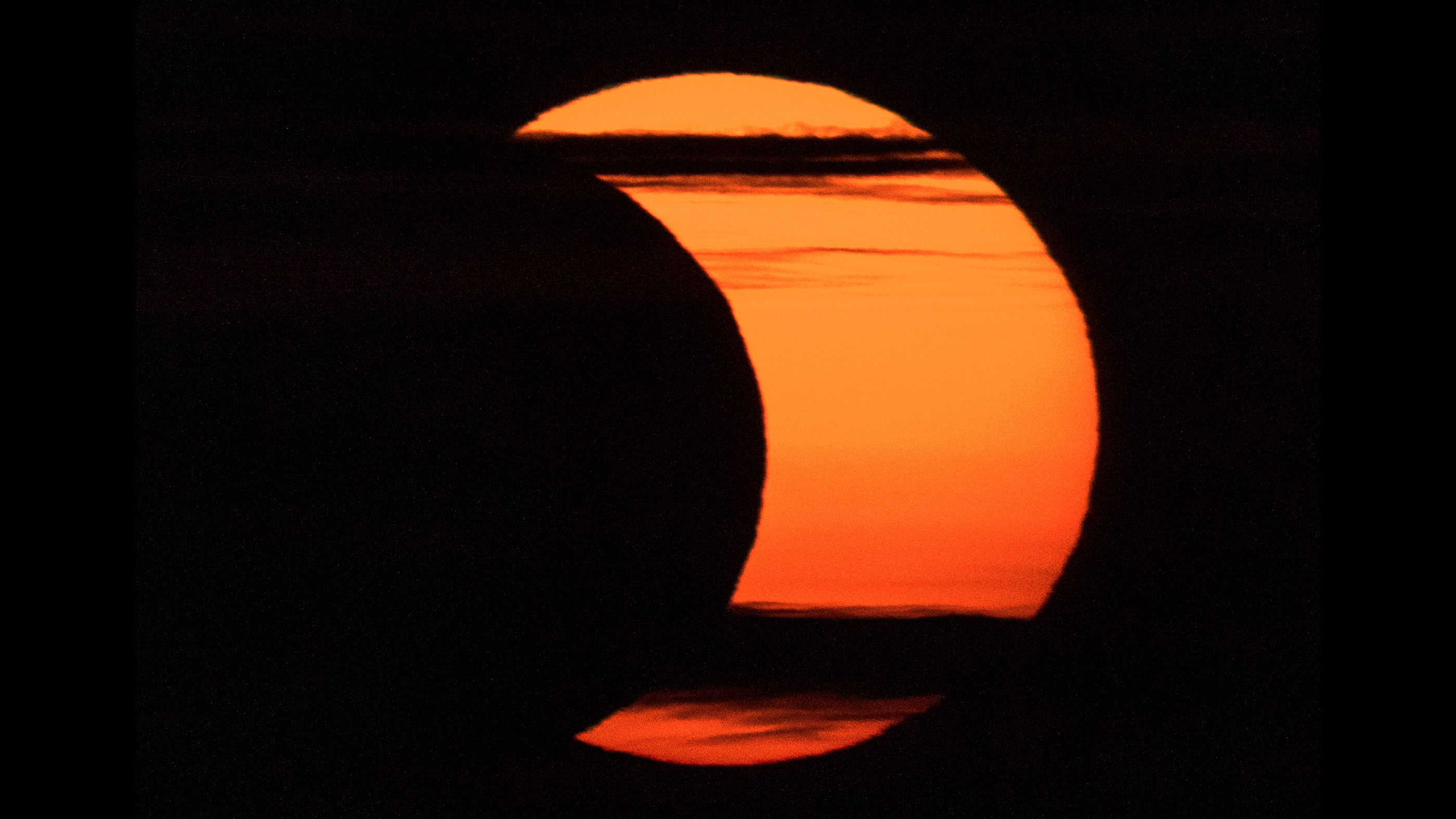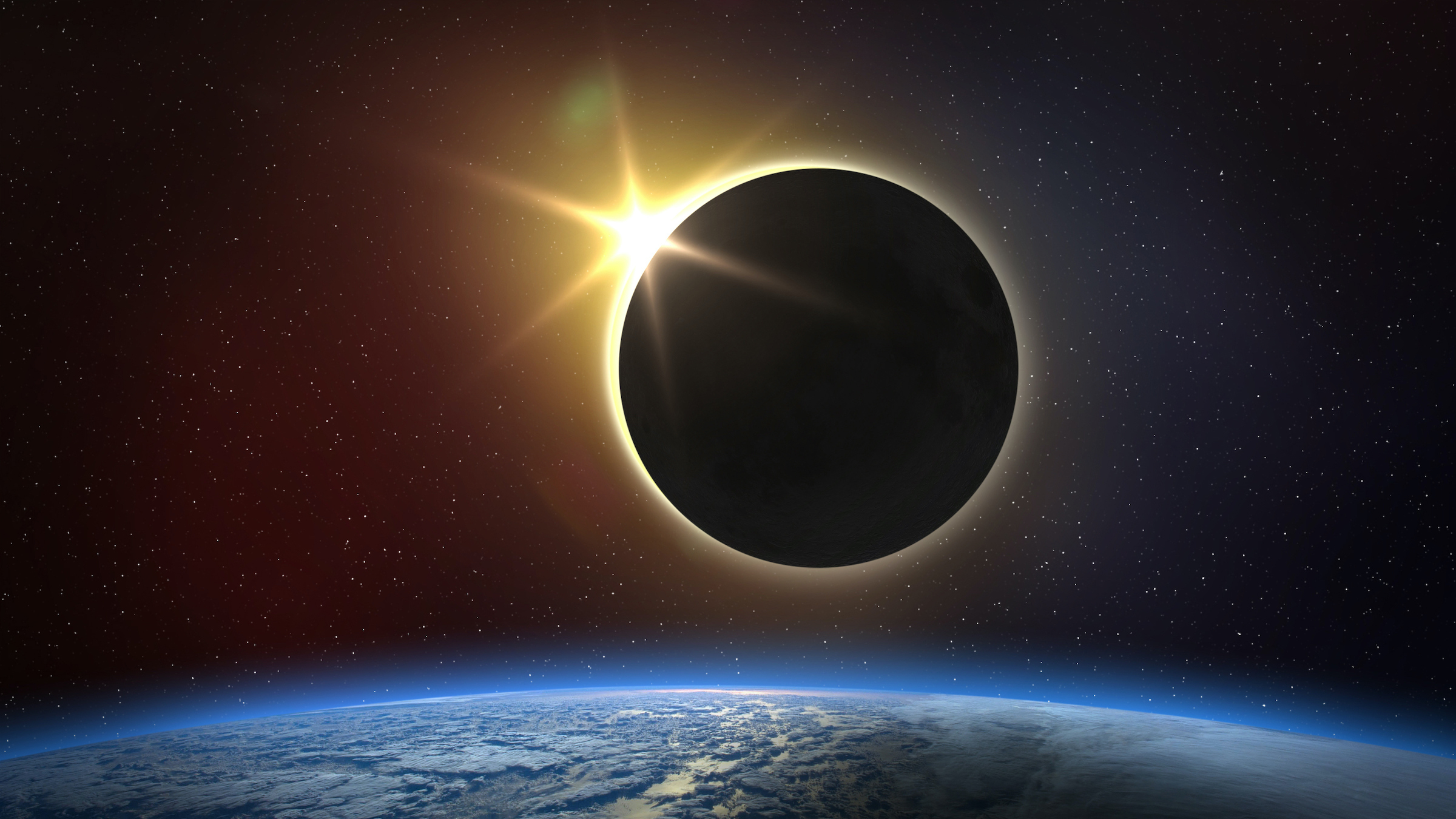The April 30 solar eclipse: When, where and what to expect.
You can catch it in-person or online.

As the new moon passes across our sun April 30, we will get a rare treat: a solar eclipse.
Solar eclipses happen when the moon blocks at least a part of the sun, from Earth's perspective. In this case, the moon will bite off as much as 64% of the sun, depending on where you are standing, making this a partial solar eclipse, according to NASA.
To catch the eclipse in person, you'll need to be be a narrow band of visibility across parts of Antarctica, the southern tip of South America, and the Pacific and Atlantic oceans. Make sure to pack certified eclipse glasses, and never look at the sun with unprotected eyes.
What makes this eclipse unique is the type of new moon that produces the event, and the fact it falls just ahead of a Muslim holiday. This new moon, called a Black Moon, is the second new moon in a single month.
Muslims are also close to celebrating Eid Al-Fitr (the end of Ramadan) on Sunday (May 1) or Monday (May 2). The new moon ahead of Eid is called the the Shawwal Moon, and Eid will begin after the local sighting of the crescent, or slightly illuminated, moon in the coming days.
Related: Here's a step-by-step guide for making your own solar eclipse viewer.

The visibility of the eclipse varies, depending on your region. According to timeanddate.com , the eclipse will first be visible at 2:45 p.m. EDT (1845 GMT). The maximum eclipse will happen at 4:41 p.m. EDT (2041 GMT). Then, the eclipse will end at 6:37 p.m. EDT (2237 GMT).
Get the world’s most fascinating discoveries delivered straight to your inbox.
To watch online, timeanddate.com will have a live blog (not a stream) available. Also, the YouTube channel Gyaan ki gareebi Live will begin broadcasting when the eclipse starts.
Solar eclipses are some of the most spectacular events in nature, particularly during a total eclipse when the moon fully blocks the sun. Such happenings are rare, however, and 2022 will not see any total solar eclipses.
That said, another partial solar eclipse on Oct. 25 will be visible from Europe, Northeast Africa, the Middle East and West Asia, according to NASA.
Editor's Note: If you snap an amazing solar eclipse photo and would like to share it with Live Science readers, send your photo(s), comments, and your name and location to community@livescience.com.
Follow Elizabeth Howell on Twitter @howellspace.

Elizabeth Howell was staff reporter at Space.com between 2022 and 2024 and a regular contributor to Live Science and Space.com between 2012 and 2022. Elizabeth's reporting includes multiple exclusives with the White House, speaking several times with the International Space Station, witnessing five human spaceflight launches on two continents, flying parabolic, working inside a spacesuit, and participating in a simulated Mars mission. Her latest book, "Why Am I Taller?" (ECW Press, 2022) is co-written with astronaut Dave Williams.


